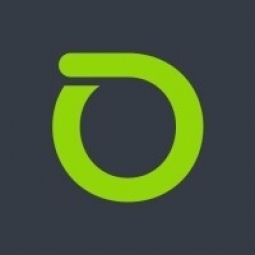公司规模
Large Corporate
地区
- America
国家
- United States
产品
- nGenius solution
- InfiniStream appliances
- nGenius Virtual Agent
- nGenius Integrated Agent for Cisco ISR
技术栈
- Cerner EMR system
- Microsoft Exchange
- Oracle
- Lawson ERP systems
- VMware servers
实施规模
- Enterprise-wide Deployment
影响指标
- Productivity Improvements
- Customer Satisfaction
- Employee Satisfaction
技术
- 应用基础设施与中间件 - 数据交换与集成
- 网络与连接 - 网络管理和分析软件
- 分析与建模 - 实时分析
适用行业
- 医疗保健和医院
适用功能
- 维护
- 质量保证
用例
- 远程协作
- 远程资产管理
- 预测性维护
服务
- 系统集成
- 软件设计与工程服务
关于客户
这家佛罗里达州大型儿童医院拥有 3,000 名员工,其中包括 650 多名主治医师和 130 名儿科专科医生,因其在儿科医学各个方面的卓越表现而闻名。该医院拥有多个儿科专科项目,并一直位居全国前列。该医院还拥有一个大型儿科护士教学项目。医院的患者护理服务专注于为患者和家庭提供一流的医疗服务,以及情感、心理和教育支持。该医院为婴儿、儿童和青少年提供所有临床领域的全面护理和康复,并使用由儿科医疗、外科和康复专家组成的多学科团队来评估、诊断并为每个孩子制定系统、全面的治疗计划。该医院还提供许多独特的以家庭为中心的计划和服务,旨在帮助父母熟悉医院服务并减少整个体验的恐惧感。
挑战
医院最近实施了几项重大 IT 计划,这些计划影响了 IT 部门的所有职能。其中最重要的项目之一是在全院范围内推出 Cerner® 电子病历 (EMR) 系统,该系统连接医生、员工和患者,并提供重症监护协作。Cerner EMR 解决方案还可自动化急诊、实验室、外科、放射科和药房等部门之间的流程。新的 EMR 系统还包括全院计算机化医嘱录入 (CPOE) 系统和图片存档通信系统 (PACS)。EMR 系统交叉集成到许多不同的应用程序中,例如电子病历 (EPR) 系统以及临床决策支持 (CDS) 系统,后者可在护理人员之间传输患者数据,对医院运营和患者护理活动极为重要。对医院运营至关重要的其他应用程序和服务包括 Microsoft® Exchange®、Oracle® 和 Lawson™ ERP 系统。此外,IP 语音 (VoIP) 以及远程医疗视频会议已成为医院越来越重要的应用,因为它们有助于医院内外的医疗专家进行实时会诊。能够始终在线访问所有这些系统对于医院和患者护理服务的有效运作至关重要。
解决方案
医院部署了 nGenius 解决方案,用于管理和确保向用户提供服务和应用程序的一系列基本任务。部署的一大推动力是支持系统自动化和 Cerner 电子病历项目的推出。通过这个项目,医院需要向多个不同的 IT 团队(例如应用程序所有者和网络管理员)提供所提供服务的健康状况和可用性的关键可见性。管理层希望所有 IT 团队都对服务性能有相同的了解,并能够根据相同的指标开展工作,以改善协作并有效解决可能出现的问题。当 IT 团队开始准备推出项目时,他们利用 nGenius 解决方案创建关键绩效指标 (KPI),以便监控和警报支持台接到最多呼叫的应用程序。此外,医院还利用 nGenius 解决方案满足了许多额外的 IT 服务管理需求,包括:24x7 服务可视性、服务级别基准、容量规划的带宽利用率、使用智能深度数据包分析进行故障排除以及预生产测试,以确保顺利推出新的应用程序和服务。
运营影响

Case Study missing?
Start adding your own!
Register with your work email and create a new case study profile for your business.
相关案例.

Case Study
Hospital Inventory Management
The hospital supply chain team is responsible for ensuring that the right medical supplies are readily available to clinicians when and where needed, and to do so in the most efficient manner possible. However, many of the systems and processes in use at the cancer center for supply chain management were not best suited to support these goals. Barcoding technology, a commonly used method for inventory management of medical supplies, is labor intensive, time consuming, does not provide real-time visibility into inventory levels and can be prone to error. Consequently, the lack of accurate and real-time visibility into inventory levels across multiple supply rooms in multiple hospital facilities creates additional inefficiency in the system causing over-ordering, hoarding, and wasted supplies. Other sources of waste and cost were also identified as candidates for improvement. Existing systems and processes did not provide adequate security for high-cost inventory within the hospital, which was another driver of cost. A lack of visibility into expiration dates for supplies resulted in supplies being wasted due to past expiry dates. Storage of supplies was also a key consideration given the location of the cancer center’s facilities in a dense urban setting, where space is always at a premium. In order to address the challenges outlined above, the hospital sought a solution that would provide real-time inventory information with high levels of accuracy, reduce the level of manual effort required and enable data driven decision making to ensure that the right supplies were readily available to clinicians in the right location at the right time.

Case Study
Gas Pipeline Monitoring System for Hospitals
This system integrator focuses on providing centralized gas pipeline monitoring systems for hospitals. The service they provide makes it possible for hospitals to reduce both maintenance and labor costs. Since hospitals may not have an existing network suitable for this type of system, GPRS communication provides an easy and ready-to-use solution for remote, distributed monitoring systems System Requirements - GPRS communication - Seamless connection with SCADA software - Simple, front-end control capability - Expandable I/O channels - Combine AI, DI, and DO channels

Case Study
Driving Digital Transformations for Vitro Diagnostic Medical Devices
Diagnostic devices play a vital role in helping to improve healthcare delivery. In fact, an estimated 60 percent of the world’s medical decisions are made with support from in vitrodiagnostics (IVD) solutions, such as those provided by Roche Diagnostics, an industry leader. As the demand for medical diagnostic services grows rapidly in hospitals and clinics across China, so does the market for IVD solutions. In addition, the typically high cost of these diagnostic devices means that comprehensive post-sales services are needed. Wanteed to improve three portions of thr IVD:1. Remotely monitor and manage IVD devices as fixed assets.2. Optimizing device availability with predictive maintenance.3. Recommending the best IVD solution for a customer’s needs.

Case Study
HaemoCloud Global Blood Management System
1) Deliver a connected digital product system to protect and increase the differentiated value of Haemonetics blood and plasma solutions. 2) Improve patient outcomes by increasing the efficiency of blood supply flows. 3) Navigate and satisfy a complex web of global regulatory compliance requirements. 4) Reduce costly and labor-intensive maintenance procedures.

Case Study
Cloud-based healthcare solution for Royal Philips
Royal Philips wanted to launch its cloud-based healthcare solution HealthSuite Digital Platform in China to deliver services to help cope with challenges related to urbanization and population growth. Philips wanted to achieve this goal by combining mobile, cloud computing and big data technologies. To bring this platform and product to market, Philips required cloud computing and local technical service capabilities in China, in addition to a flexible IT infrastructure that could handle user requests.








